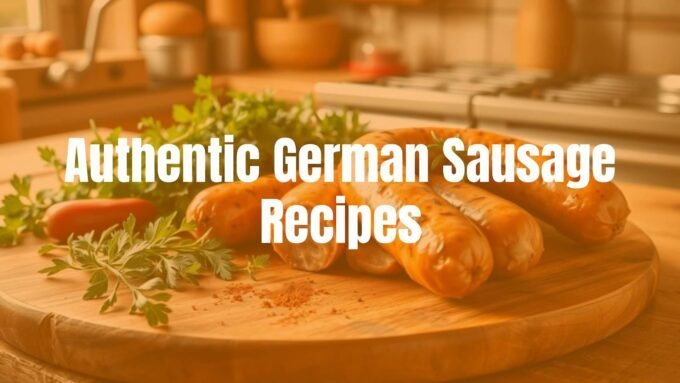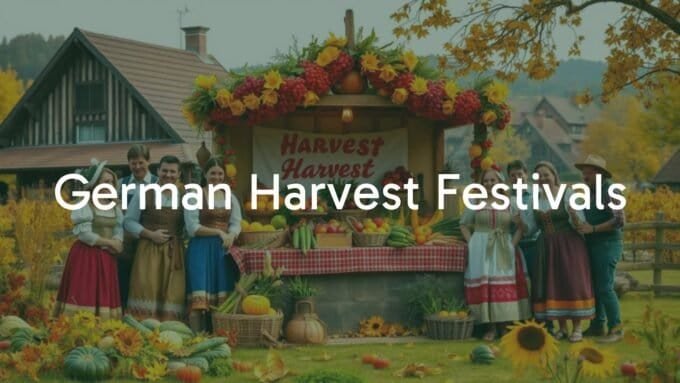Traditional German cooking grew over many centuries, shaped by regional habits and a love of hearty, tasty food. Despite the old stereotype of being plain or heavy, these methods show how cooks made the most of simple foods and learned from neighbors. The goal is strong flavor and good nourishment, often through slow methods that bring out the best in each ingredient. It is practical and pleasurable at the same time, tied to the seasons and to daily life.
German cooking has deep roots going back to the Middle Ages. Short growing seasons compared with warmer southern Europe led people to depend on early grains like wheat and barley and on livestock. This pushed cooks to develop ways to store food, skills that still matter today. Over time, Romans brought fruit trees and grapevines, and medieval trade introduced new spices and methods, which broadened the food scene. Today, chefs such as Simon Cordes rework classic dishes, making them lighter and showing how good these traditions have always been, even if they were once misunderstood.
Core principles of traditional German cuisine
Several ideas guide German home cooking. A key one is the love of filling meals. Meat is common-pork, beef, and poultry-served with potatoes, noodles, and many kinds of bread. Examples include roasted pork hocks (Schweinshaxe) and pork roast with cabbage (Schweinebraten und Kohl), meals that give warmth and energy on cold days.
- Common meats: pork, beef, poultry
- Staple sides: potatoes, noodles, many breads
- Typical style: warm, filling, and satisfying
Another major idea is preservation. Long before fridges, Germans used salting, smoking, curing, and pickling to keep food longer. Matjes (pickled herring), Sauerbraten (beef cured in vinegar and wine), and Sauerkraut still carry these old methods. People enjoy them today for their history and their bold, tangy flavors. These skills helped families get through lean seasons and created tastes that are now favorites.
Traditional German culinary culture and values
German food culture values comfort, community, and the seasons. The idea of “Gemütlichkeit” (coziness) shows up in friendly gatherings with food and drink. The Christian calendar adds many special meals, from Christmas market treats to the short white asparagus season. Food is a way to meet, share, and connect.
Meal patterns reflect this. A big breakfast (Frühstück), a larger lunch (Mittagessen) as the main meal, and a light evening meal (Abendbrot) with bread and cold cuts were common and still guide many homes. The afternoon pause for “Kaffee und Kuchen” (coffee and cake), especially on weekends and with older folks, shows the love for baked goods and for taking time to relax together. Food is about community as much as it is about calories.

How Regional Differences Shape German Cooking Techniques
Germany, in Western Europe, has many food traditions shaped by its geography and federal history. Coasts in the north and mountains in the south led to different ingredients and ways to cook. These regional habits still shape daily cooking and eating.
Neighbors matter too. Germany shares dishes and ideas with Poland, the Czech Republic, Slovakia, Austria, Switzerland, and the Low Countries (Netherlands, Belgium, Luxembourg). This steady exchange brought in spices and methods that cooks adapted in a German way.
North vs. South: ingredients and techniques
| Region | Key ingredients | Common methods | Examples |
|---|---|---|---|
| North | Seafood (herring, cod, pollock), rye | Pickling, smoking, frying | Fischbrötchen, pickled herring |
| South | Pork, veal, wheat | Roasting, rich gravies, herb use | Weißwurst, roasts, sweet or richer flavors |
The north, close to the North and Baltic Seas, centers on fish. Pickling and smoking are common and practical. Cooler weather suits rye and heavier fare. The south, with better farmland and a warmer climate, focuses more on meat and wheat breads. Influences from Austria and Italy bring more herbs and sometimes a touch of sweetness or richness.

Influence of local produce and geography on food preparation
Local produce shapes how people cook across the year. From April to June, “Spargelzeit” (asparagus season) takes over menus. White asparagus is gently poached or steamed and served with Hollandaise, ham, and boiled potatoes. The idea is to let the vegetable be the star.
Land and climate also guide methods. Mountain areas favor slow stews and braises for tougher cuts. Coastal areas often grill or fry fish for quick meals. Grain type matters too: rye in the north for dark breads, wheat in the south for lighter loaves and pastries. This close link between place, harvest, and technique keeps German food varied and true to its roots.
Key Cooking Methods Used in Traditional German Cuisine
German cooks use time-tested ways to get deep flavor and tender texture from simple, local foods. These methods are steady and reliable rather than flashy, and they turn basic ingredients into well-loved dishes.
From braising to poaching to baking, the mix of methods comes from times when saving food and using every part mattered. The results are filling, warm, and full of flavor.
Braising and stewing for hearty meat dishes
Braising and stewing are core methods for meat. Both work well for tougher cuts. Braising starts with browning meat to build flavor. This first step is key. Then the meat cooks slowly in a covered pot with a small amount of liquid-broth, wine, or vinegar (as in Sauerbraten)-for hours. Slow heat breaks down connective tissue and adds flavor from the liquid and aromatics.
Stewing uses smaller, even pieces, fully covered with liquid, often with vegetables. Goulash (strongly present in German kitchens) and Eintopf (one-pot stew) show how comforting and full-flavored stews can be. These methods build layers of taste and a tender bite, a mark of many German family meals.

Slow simmering and poaching basics
Poaching cooks food in liquid below a boil-water, broth, or milk-so fish and eggs stay moist and tender. Gentle heat keeps textures soft and flavors clear, often with a light sauce on the side.
Slow simmering suits vegetables and some meats when a gradual build of flavor is wanted. Sauerkraut, after fermenting, benefits from a slow cook that softens its sharpness and makes it easier to digest. Many broths and vegetable sides are simmered gently so flavors come together without harsh boiling.
Sautéing and pan-frying for vegetables and sausages
Sautéing cooks food fast in a little fat over higher heat, great for vegetables that should stay a bit crisp with slight browning. Pan-frying uses a bit more fat and often lower heat, which is perfect for sausages and thin meats like schnitzel to get a golden crust.
German sausages-Bratwurst, Knockwurst, and more-brown well in a pan, which boosts their savory taste. For Bratkartoffeln (fried potatoes) and Reibekuchen (potato pancakes), pan-frying creates the much-loved crispy outside.
Baking for breads, pastries, and cakes
German baking is broad and respected. Bread is central to daily life, and Germany has an enormous “Brotkultur,” with hundreds of bread types and many pastries and rolls. From dark rye breads like Roggenbrot and Pumpernickel to lighter Weißbrot and countless Brötchen, baking skills shape German identity. Sourdough is especially important, giving complex flavor and longer keeping time.
Sweet baking is rich and varied. German cakes and tarts use fruit such as apples, plums, strawberries, and cherries. Schwarzwälder Kirschtorte (Black Forest cake), Alsatian apple cake, and Stollen show careful baking and classic flavors. Käsekuchen (cheesecake with quark) relies on accurate baking time for a light, airy texture. Care and precision shine in these bakes.
Pickling and fermenting: making sauerkraut and more
Pickling and fermenting are old and valued in German kitchens, giving both storage and tangy taste. Sauerkraut is the best-known example. Shredded cabbage mixed with salt sits in its own brine without air for weeks while lactic acid bacteria change its flavor and boost its value as food.
Fermentation also powers beer and many sourdough breads. Pickling is used for vegetables and fish, such as Rollmops (pickled herring wrapped around a gherkin or onion) and pickled cucumbers. These sides help keep rich meals balanced with a sharp, bright note.
Traditional German Sauces, Spices, and Condiments
Beyond meat and bread, German food uses many sauces, herbs, and condiments that shape its taste. Dishes are seasoned with care and paired with sauces that bring balance-creamy, savory, or tangy-to round out a plate.
Old trade routes and local gardens guide which spices are used. Mustard and horseradish are common at the table and are key parts of many meals, giving them a clean, sharp lift.
Classic German seasonings and their culinary uses
- Fresh herbs: parsley, celery greens, dill (in salads, soups, garnishes)
- Caraway: in rye bread and sauerkraut; earthy, slightly anise-like
- Juniper berries: for game and some sauerkraut; piney and lightly sweet
- Marjoram: pairs well with pork and sausages
- Sweet spices in baking: cardamom, anise seed, cinnamon (cakes, holiday drinks)
- Newer additions: basil, sage, oregano, curry powder (now common in many homes)
Signature sauces and how they’re made
Sauces are central to many meals. Meat gravies (Soßen) are popular, especially in places like Franconia. They draw depth from pan drippings, stock, and sometimes red wine or beer, thickened until smooth and rich.
Mustard (Senf) is varied and beloved, from medium-hot to very spicy (such as in Düsseldorf) and the sweet mustard served with Bavarian Weißwurst. Horseradish appears plain, mixed with cream (Sahnemeerrettich), or blended with mustard, adding a strong, clean heat that cuts through rich food. Frankfurt green sauce (Grüne Soße) is a cold herb sauce with sour cream and local greens, served with potatoes and eggs.
| Condiment | Style | Typical pairing |
|---|---|---|
| Mustard (Mittelscharf) | Medium heat | Sausages, schnitzel |
| Düsseldorf mustard | Hotter, sharper | Cold cuts, roasts |
| Sweet Bavarian mustard | Sweet, mild | Weißwurst |
| Horseradish | Plain or with cream | Beef, fish, cold platters |
| Frankfurt green sauce | Herb-packed, cool | Boiled potatoes, eggs |

Famous Dishes Showcasing German Cooking Techniques
Many well-known dishes show how German methods work in practice. These recipes carry history, mark regions, and bring comfort. They prove that simple foods, handled with time and care, can become something special.
From long marinades for Sauerbraten to dumpling making and the many bakes in German sweets, these foods stand for deep flavor and careful work. They bring “Gemütlichkeit” to the table.
Sauerbraten: marinating and braising steps
Sauerbraten is often called a national dish and is a clear example of marinating and braising. A tougher cut of beef (in earlier times, even horse) sits for days, sometimes up to two weeks, in red wine vinegar and red wine with spices and aromatics. This long soak softens the meat and gives it a deep, tangy-savory taste.
After marinating, the meat is seared for a brown crust, then slowly braised in its marinade until very tender. The cooking liquid becomes a rich gravy with a slight sweetness to balance the sour notes. This steady two-step method turns a tough cut into a soft, flavorful roast, often served with potato dumplings and red cabbage.
Kartoffelsalat and potato specialties: boiling, mashing, and beyond
Potatoes are central in German food, used in many ways. Kartoffelsalat (potato salad) usually has a warm vinegar-oil-broth dressing, often with bacon and onions. Potatoes are cooked until just tender, sliced warm, and mixed so they soak up the dressing well. It can be served warm or cold, depending on region and family custom.
Other staples include boiled potatoes (Salzkartoffeln), mashed potatoes (Kartoffelpüree/Kartoffelbrei), and pan-fried potatoes (Bratkartoffeln) with onions and sometimes bacon. Potato dumplings (Kartoffelklöße), made from raw or cooked potatoes and then cooked gently, are classic sides for meat and gravy. Potato pancakes (Kartoffelpuffer) and potato noodles (Schupfnudeln) show even more range.
Sausage making and cooking methods
Germany has over 1,500 sausage types (Wurst), backed by long tradition and quality rules dating to the 13th century. Making sausage means grinding, seasoning, curing, and sometimes smoking meat such as pork, beef, or veal.
- Bratwurst: grilled or pan-fried for a crisp skin and juicy center
- Wiener: smoked and fully cooked, warmed in hot water
- Blutwurst and Leberwurst: cooked, sometimes smoked; often eaten cold or spreadable
Each type has a best way to cook it, from a quick pan sear to a gentle heat in water, letting the meat and spice mix shine.
Breads and rolls: baking traditions and changes
German “Brotkultur” is famous for its variety. Careful baking and respect for the craft built this wide range. Dark rye breads like Pumpernickel and Roggenbrot often use sourdough and whole grains for flavor and fiber. Lighter wheat breads and countless rolls round out daily eating.
Sourdough is a key technique for flavor, texture, and keeping quality. Bakers formed guilds in medieval times to maintain standards and foster skill. Bread is part of daily life and holidays. While old methods stay, modern bakers add new grains and ideas, keeping bread culture lively-from pretzels to local favorites like Franzbrötchen.
Dumplings, noodles, and pasta dishes
Dumplings, noodles, and pasta are comforting sides and mains. Made from wheat and eggs or from potatoes, they vary by region.
In the southwest, Spätzle are popular. These eggy, chewy noodles are thicker than Italian pasta. Käsespätzle mixes Spätzle with cheese and fried onions, like a German mac and cheese. Maultaschen, large stuffed noodles with meat, spinach, and breadcrumbs, are served in broth or with butter and onions.
Klöße (north) or Knödel (south) are dumplings made from bread, potatoes, or quark. They can be light or dense. Thüringer Klöße, potato dumplings, often sit next to Rouladen or Sauerbraten and soak up gravy well.
Desserts: baking and pudding preparations
German desserts lean on baking and simple puddings. Cakes, tarts, and pastries often showcase fruit-apples, plums, strawberries, and cherries. Schwarzwälder Kirschtorte (Black Forest cake) layers chocolate sponge, whipped cream, and cherry brandy-soaked fruit, showing careful baking and assembly.

Everyday favorites include Apfelkuchen and fruit tarts. Käsekuchen uses quark for a light, tangy filling. Milchreis (rice pudding) blends short-grain rice, milk, vanilla, and sugar into a creamy bowl. In the north, Rote Grütze-red berry pudding set with starch-comes with cream or vanilla sauce. Holiday time brings Lebkuchen and Stollen, tying baking to family and festival traditions.













Leave a comment